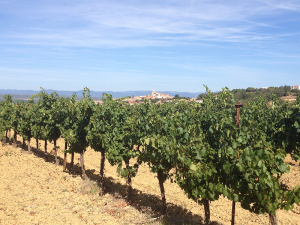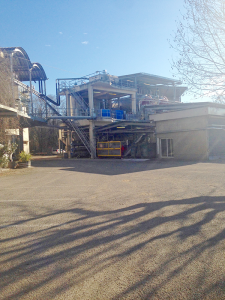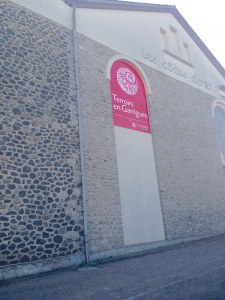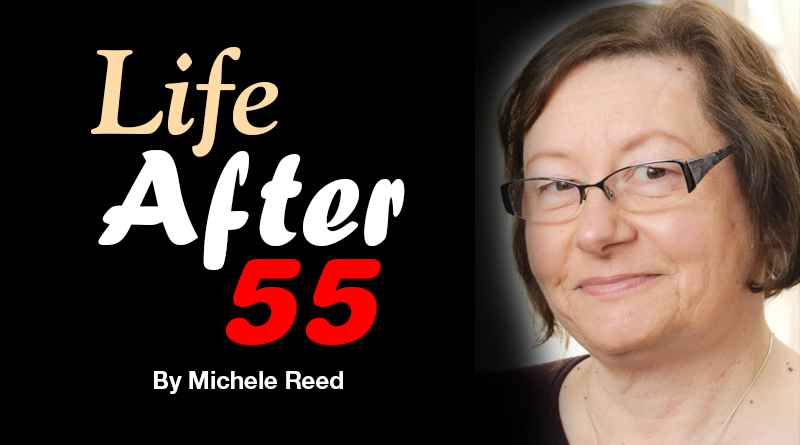Wine, Anyone?
By Michele Reed
michele@cny55.com

Ben Franklin, one of the first Americans to embrace life as an ex-pat in France, famously said, “Wine is constant proof that God loves us and loves to see us happy.”
I couldn’t agree more. While we didn’t move to the sunny south of France for the wine alone, the abundance and quality of the wine here surely does make us happy.
We live, quite simply, in a wine-lover’s paradise. Wine is a way of life here. Our village is a wine-growers’ community with a long history of producing the fruit of the vine. We sit perched on a high hill and everywhere you look, the village is surrounded by vineyards. As we ride the bus home from the nearby city of Beziers, nothing breaks up the view of vines; they stretch as far as the eye can see.
That’s because our vineyards are both the largest and oldest in the world. Vines were here in pre-historic times, before homo-sapiens. The Greeks brought viticulture to our shores in 600 BC and winemaking flourished in Roman times. It continued its healthy growth despite many crises over the centuries, from Emperor Domitian tearing up our vines and forbidding new plantings because of our challenge to Italian growers, to the vine-killing epidemics of mildew and phylloxera in the 19th century to an influx of fake wine made with beet sugar in the early 20th century. That set off the famous “Vignerons’ Revolt” in 1907 and led to strict French purity laws.
Occitanie, the new region including our own Languedoc-Roussillion and the Midi-Pyrenees, stretches from the Pyrenees Mountains to the Mediterranean Sea and has nearly 500,000 acres of vineyards. A good 173,000 of those are AOC — or Appellation d’Origine Controllee — the strict designation the French government bestows on agricultural products based on location and method of production. Faugeres and Saint-Chinian are nearby AOCs. Our village wine is non-AOC Coteaux de Beziers, but they are working on an AOC to be called Terraces of Beziers. You can find wines from all over our region branded with the logo Sud de France, marking all agricultural and artisanal products made in the South of France, and even book oenotourisme, or wine tourism, vacations here.

Not only are the vistas of vineyards proof that our village is a historic wine-making hub, we are surrounded by the evidence every day. Our neighbor Gilles across the street works in the wine business, and enjoys making his own wine and sharing it with us. Another neighbor owns a vineyard. Daily, he drives his tractor up our street and parks it in a huge garage he has across from his house. The street is so narrow, it’s a 10-minute production of backing and inching forward to get the tractor in.
At the foot of our street are vignerons, or the homes of the rich winemakers of the 19th century. They are marked by huge doors so the growers could drive carts of grapes into their homes, where they had winepresses. Now the families opt for villas on the outskirts of town and the vignerons are sought-after purchases for expats, with many converting the spacious properties into bed and breakfasts.
Our village lives by the rhythm of the vines. Winter is the slow time, with only some pruning to be done. As spring warms up, the workers are out planting new vines, pruning old ones, and putting down sulphur and copper to deter mold. Our many organic vineyards are marked by flowers blooming underneath the vines. Summer means careful tending of the vines in the hot sun. August and September are the vendange or wine harvest. Last August the village was abuzz: it was first mechanical harvesting. While in past years volunteers and lately itinerant workers would harvest the grapes by hand, we had acquired a huge mechanical harvester, which reduced the time and labor considerably. Thoughts were divided, with some local people excited by the prospect and others longing for the more traditional approach.
For weeks every autumn, we see tractor after tractor hauling open carts of purple and green grapes down the road to the Cave Cooperative. There the grapes are crushed and the wine fermented in huge stainless steel vats. The process of wine making and bottling fills the autumn months. All growers provide a portion of their grapes to the village wine, which is sold under the names Cornelianum and Terroirs en Garrigues. The excitement last year was when one of our wines won a regional gold medal. They didn’t raise the price a penny for the bottle that now boasts a prominent gold seal.
Every so often, Bill will walk down to the Cave and purchase a box of the local red. Five liters, or the equivalent of six and a half bottles, costs 9 euros, or $1.46 a bottle. And it tastes wonderful! We can buy bottles of the Faugeres or Saint-Chinian at the local butcher shop and the grocery store, and they range from $3.50 to $6. We splurge on a bottle every so often, or when the Cave is closed for harvest.

Gilles is not the only one making his own wine; “tout le monde” — everyone does it. In the summer, I like to buy my vegetables at the “garage,” literally a garage that the growers open up and stock with their produce every morning and late afternoon. The garage lady’s 85-year-old mom (who is our neighbor, two doors down) makes wonderful confiture, or jam, out of the fruits of their farm, and her husband makes a muscat from the grapes he grows. This white wine is naturally sweet and strong, a little spicy, and absolutely delicious. They’re not open in the winter, so just before leaving in September, we cellar a couple of bottles of the muscat in our own “cave,” a cold, stone alcove under the stairs off the kitchen, and stock up on jars of confiture to greet us on our return.
That way, when we arrive from snowy Oswego, we can toast the enduring wisdom of Ben Franklin’s observation.
Michele Reed retired after a career spanning four decades in public relations, advertising, journalism and higher education. She now writes travel articles, book reviews, haiku poetry and fiction. Bill Reed retired after four decades in social services with the county of Oswego, and now works at travel photography and photojournalism, along with writing book reviews.

